class: center, middle, inverse, title-slide # War, Technology & Innovation ## Autonomous Weapon Systems and the American Way of War ### Jack McDonald ### 2020-01-13 --- class: inverse # Lecture and Seminar Outline .pull-left[ Lecture - Research Projects and the Research Essay - Identifying Research Areas - Paper Presentation: Vietnam as the First Digital Battlefield - Identifying Academic Relevance ] .pull-right[ Seminar - Discussion of the research puzzle article - Discussion about relevance of research puzzles to your own research - Q&A about anything unclear for research essay ] ??? This lecture will introduce five of the general components for a successful research essay: Identifying a research area, identifying an interesting research problem, constructing a theoretical framework, posing an answerable research question, and considering the implications of your research. We will be covering one of these in detail each week. In this lecture, we will discuss different processes of identifying research areas. This lecture also provides an outline of my own research project, namely, the early development and deployment of automated and autonomous weapon systems. I will walk you through the project and my paper, but the emphasis of the lecture will be about the process of identifying a research area. The lecture will cover the current debates about the development and use of lethal autonomous weapon systems, alongside a couple of bodies of existing academic literature on military innovation and the American way of war. We will discuss ways of working from a topic of personal interest or contemporary policy problem to a research area that connects with existing academic research. Discussion question: Do “ways of war” exist? Research discussion question: What makes an academic research project worth doing? Seminar discussion questions: To what extent is a “research puzzle” necessary for the research essay that you wish to do? asd --- # Research Essay Intro .pull-left[ The Basics: - 5000 words - References count, _everyone_ uses Chicago footnote referencing - Submit by deadline of April 2, 1300 ] .pull-right[ Five components - Identifying a research area - Identifying an interesting research problem - Constructing a theoretical framework - Posing an answerable research question - Considering the implications of your research. ] ??? --- # Paper Intro .pull-left[ Research confluence - Targeted killings & ethics - Autonomous weapon systems ISA 2017: - Individuated Warfare and Permissible Patterns of Life - Are You Certain, Hal? - Artificial intelligence and epistemic uncertainty as a challenge to revisionist just war theory - Forked research: Data ethics in armed conflict ] .pull-right[ ISA 2018: - Vietnam: The First Digital Battlefield? For publication: - Not Much Ado About AEGIS? Ethics and the Governance of Artificial Intelligence ] ??? Working papers are works in progress - Ideas sparked by current events/research - Developed critiques of current research - Presentations of proposed research projects - Presentations of emerging results from research - Finalised papers ready for publication, in press, or recently published research ("job market papers") asd --- class: inverse # Identifying Research Areas ??? --- class: inverse # Small Group Discussion .pull-left[ 5 minutes: What makes an academic research project worth doing? ] .pull-right[ 10 minutes: How much effort do you think you need to make in your research essay to justify your research topic? - Do you agree/disagree? - Does the research topic matter in your agreement/disagreement? ] ??? --- # Ways of Justifying Research .pull-left[ - Academic Importance - Policy Relevance - Personal interest ] .pull-right[  ] ??? --- # Academic Importance and Policy Relevance .pull-left[ Theoretical Importance - Development of original theory - Contribution to ongoing academic debates - Testing of theory with new evidence Empirical Importance - New data collection - Reassessment of existing data ] .pull-right[ Policy relevance relates to "real world problems" in public policy This is an extremely large category, so usually importance is defined relative to international or national impact on society/politics Often involves the study of solutions to long-term issues, addressing current crises, or identifying future policy problems ] ??? --- class: inverse # Small Group Discussion .question[How do you make a policy problem relevant to academic disciplines?] ??? --- # LAWS: A Policy Problem .left-column[ 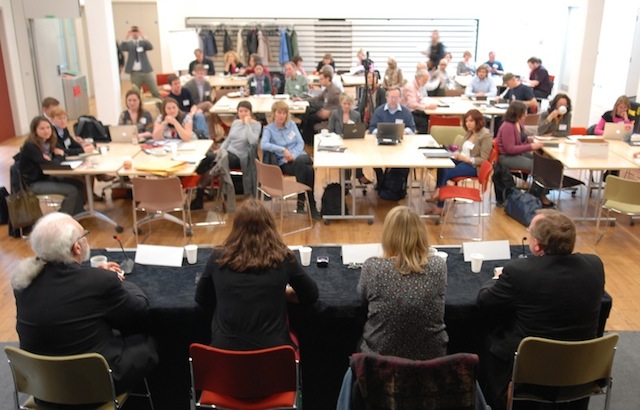 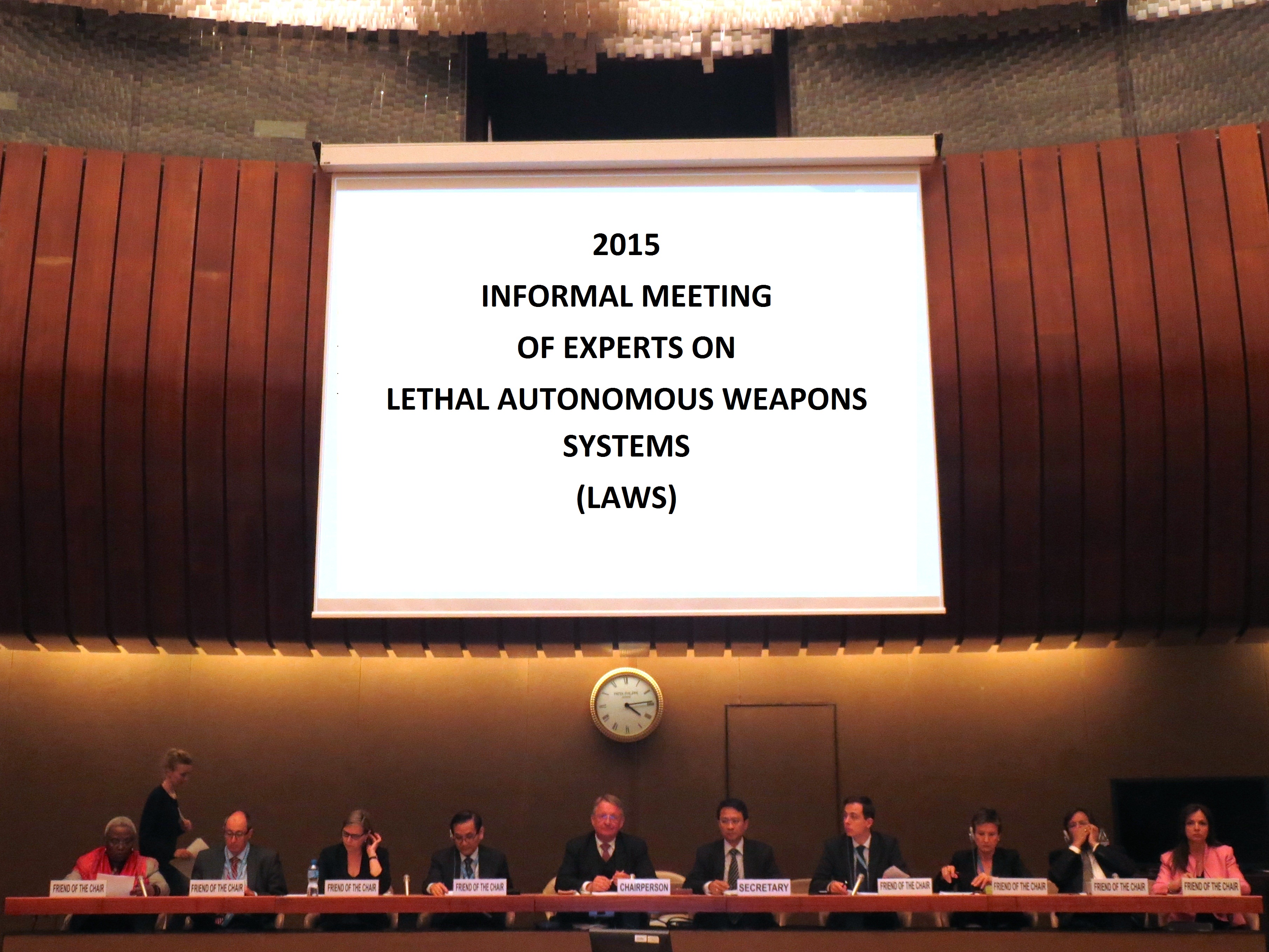  ] .right-column[ A (sketch) timeline - 2009 International Committee for Robot Arms Control formed - 2012 US DOD issues Directive 3000.09 _Autonomy in Weapon Systems_ - 2013 The Campaign to Stop Killer Robots launched - 2013 States parties to CCW agree to work on "lethal autonomous weapons systems" in 2014 - 2014 CCW deliberations begin - 2017 First meeting of CCW Group of Governmental Experts - 2019 30th state calls for prohibition of fully autonomous weapons ] ??? --- # Why Is That Important? .pull-left[  LAWS pose a huge range of policy problems, and raise a host of academic questions ] .pull-right[ US Offsets - First: Nuclear weapons/deterrence to offset 1950s conventional Soviet military power in Europe - Second: High-tech weapons platforms in 1970s/1980s to offset conventional Soviet military power in Europe - Third: Future systems to counter Russian and Chinese responses to RMA (Announced in 2014) ] ??? --- class: inverse # Vietnam: The First Digital Battlefield? ??? --- # Meaningful Human Control .left-column[ 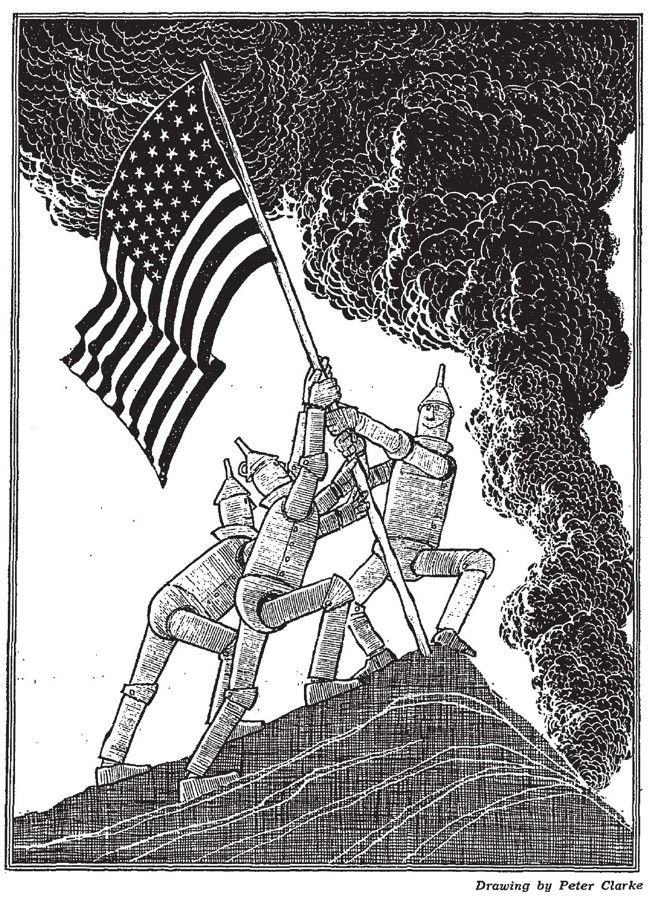 ] .right-column[ > "Things just move too fast these days," says a project officer. "We've got to get man out of the loop." The New York Times, 1975 > Autonomous and semi-autonomous weapon systems shall be designed to allow commanders and operators to exercise appropriate levels of human judgment over the use of force DOD Directive 3000.09, 2012 ] ??? --- # War in the Information Age .left-column[ 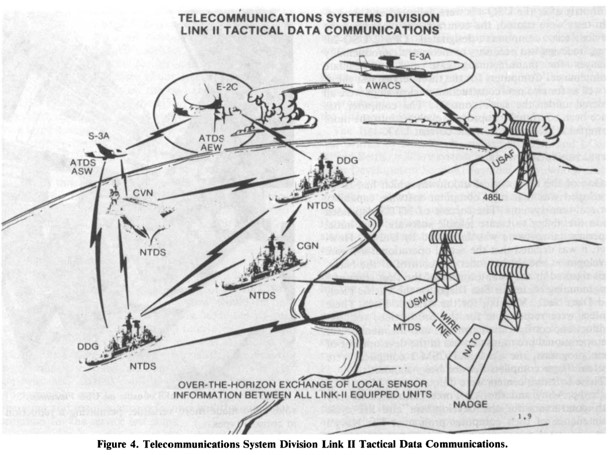 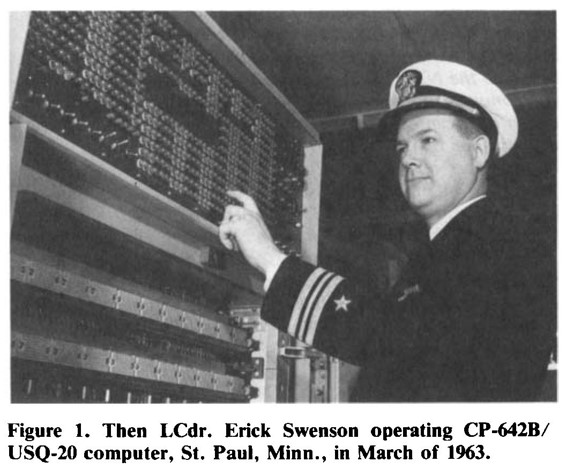 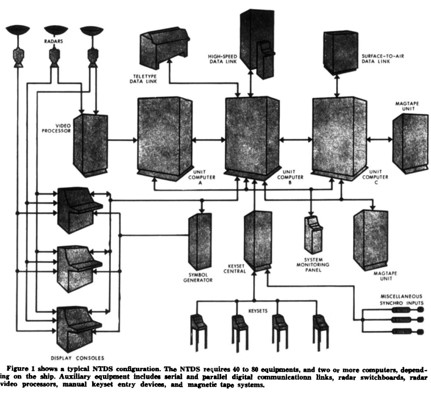 ] .right-column[ - 20 years - 1956: First guided missile destroyer, USS Canberra - 1966: First networked ship USS Wainwright - 1976: RCA contracted for AEGIS .picblock[ 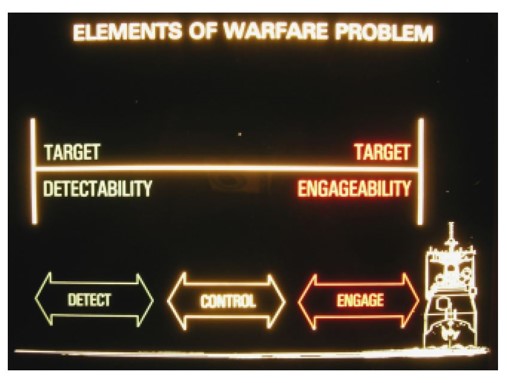 ] ] ??? --- # The Absence of the Vietnam Era .pull-left[ 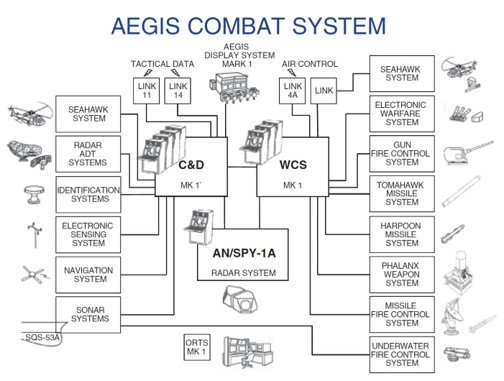 Battlefield electronics, and digital ICTs, first trialled in Vietnam war ] .pull-right[ 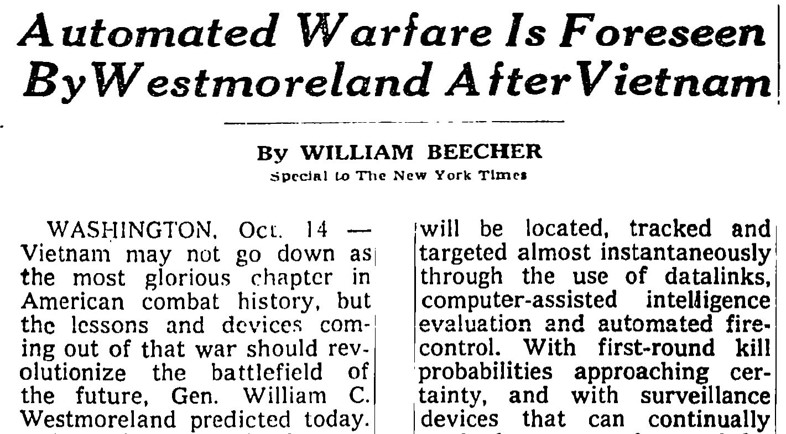 Vision of "automated battlefield" is 50 years old Substantial difference in outcome and perception due to domains ] ??? --- # Changing Frames of Justification Development of modern secular just war theory (and advances in international law) occur after initial fielding of digital ICTs "Fire and forget" weapons went from being autonomous weapons, to automated weapons Intellectual incoherence of MHC due to strategic aim of LAWS ban, amnesia due to tactical narrative ??? --- # Ethics and Technology .pull-left[ Law and ethics don’t necessarily shape problems, but they now shape design/institutional responses Thinkable becomes unthinkable (norms) Unthinkable becomes possible (Engineering) ] .pull-right[ 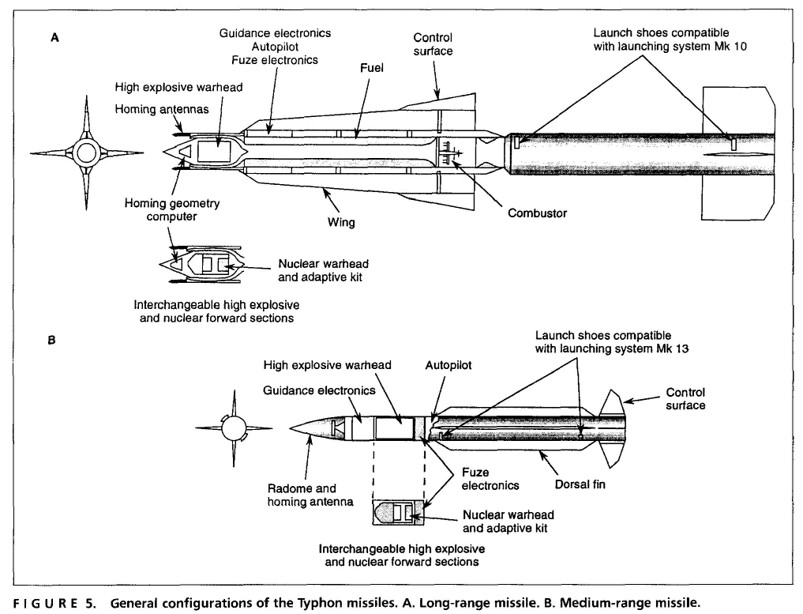 ] ??? --- class: inverse # Small Group Discussion Okay, so I have in mind making this relevant to ethics, but what else could this idea be made relevant to? --- # Academic Importance: Strategy & Technology .pull-left[ .medium[ > twentieth-century American operational practice saw few genuine Kuhnian paradigm shifts to revolutionary ways of thinking. Rather, what took place was more akin to paradigm “tiering.” Like layers of sediment, earlier paradigms were partially covered by newer ones but were never physically displaced. Antulio J. Echevarria, _Reconsidering the American Way of War_ ] ] .pull-right[ 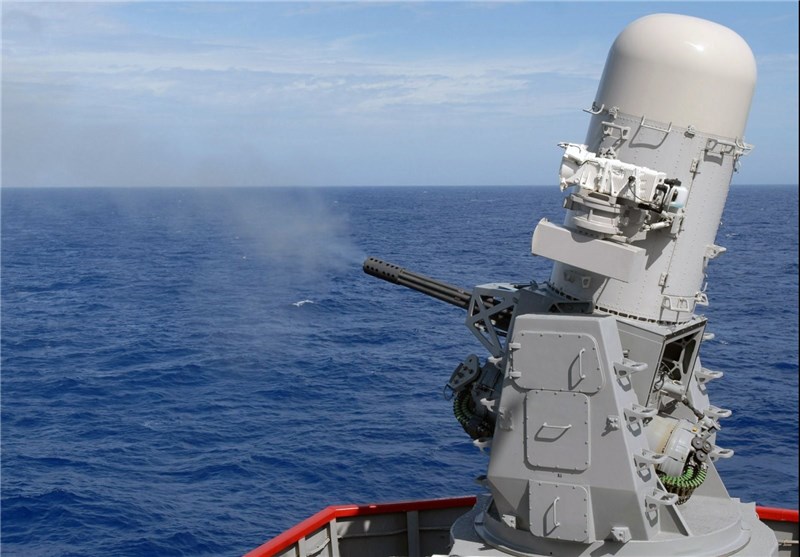 ] ??? What was your opinion of Echevarria's argument? Do you think your own country has its specific "way of war"? Antulio quote p.300 --- # Academic Importance: Ethics & Emerging Technology .pull-left[ Practical ethics emerges in the 1970s - Bioethics - Modern just war theory 1986 Challenger Disaster - Engineering ethics ] .pull-right[  ] ???